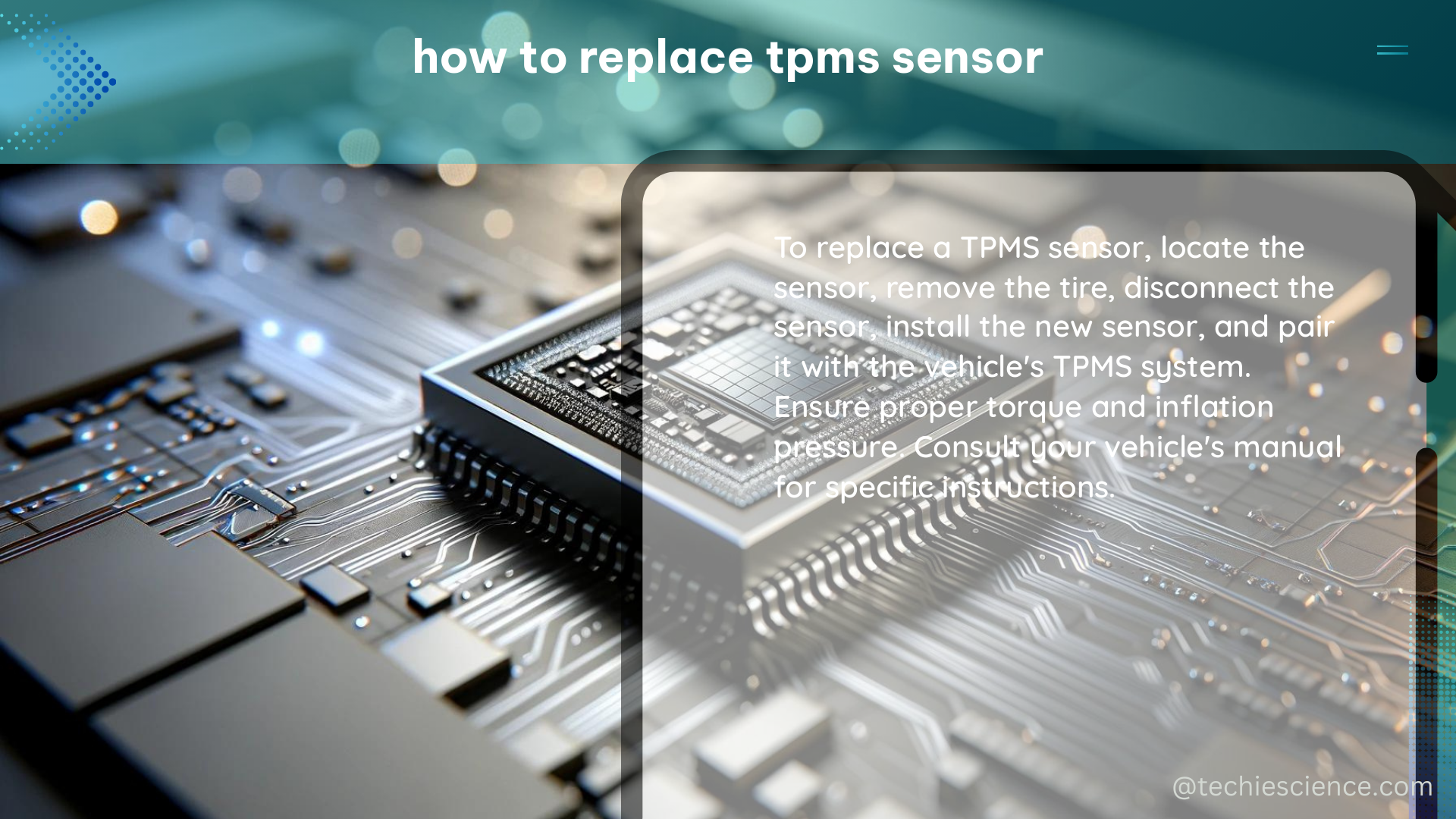Replacing a TPMS (Tire Pressure Monitoring System) sensor can be a cost-effective way to maintain your vehicle’s safety and performance. This comprehensive guide will walk you through the step-by-step process of replacing a TPMS sensor, including the necessary tools, precautions, and programming requirements. Whether you’re dealing with a faulty sensor or simply want to upgrade your system, this guide will provide you with the knowledge and confidence to tackle the task yourself.
Preparing for TPMS Sensor Replacement
Before you begin the replacement process, it’s essential to gather the necessary tools and materials. You’ll need the following:
- A jack and jack stands to safely lift and secure the vehicle
- A tire bead tool to break the tire bead and access the TPMS sensor
- A TPMS sensor puller tool to remove the old sensor
- A torque wrench to properly tighten the new sensor
- A TPMS diagnostic tool or scanner to program the new sensor
Additionally, it’s crucial to ensure that you have the correct replacement TPMS sensor for your vehicle. TPMS sensors come in various types, including programmable, multi-protocol, and one-to-one aftermarket sensors. Consult your vehicle’s manufacturer or a reputable auto parts store to determine the appropriate sensor for your make and model.
Removing the Old TPMS Sensor

-
Lift and Secure the Vehicle: Use the jack to lift the vehicle and secure it with the jack stands. This will provide you with safe and stable access to the wheel and TPMS sensor.
-
Remove the Wheel: Loosen the lug nuts and remove the wheel to expose the TPMS sensor.
-
Locate the TPMS Sensor: The TPMS sensor is typically located on the inside of the wheel, near the valve stem. You may need to use a tire bead tool to break the tire bead and gain access to the sensor.
-
Remove the Old Sensor: Carefully use the TPMS sensor puller tool to remove the old sensor from the valve stem. Be cautious not to damage the wheel or the valve stem during this process.
Installing the New TPMS Sensor
-
Insert the New Sensor: Gently insert the new TPMS sensor into the valve stem and tighten it with a torque wrench. Ensure that the sensor is securely in place and that the torque specification is met.
-
Reinstall the Wheel: Replace the wheel and tighten the lug nuts in a star or criss-cross pattern to the recommended torque specification.
-
Lower the Vehicle: Carefully lower the vehicle and remove the jack stands.
Programming the New TPMS Sensor
-
Wake Up the Sensors: If the vehicle has been stationary for more than 30 minutes, the TPMS sensors may be in “sleep mode” to conserve battery power. You’ll need to wake them up so they can transmit the latest tire pressure information to the Smart Junction Box (SJB).
-
Use a TPMS Diagnostic Tool: Depending on your vehicle’s make and model, you may need to program the new TPMS sensor using a TPMS diagnostic tool or scanner. Follow the specific instructions for your vehicle to ensure proper programming.
-
Verify the TPMS System: Start the vehicle and check the TPMS system to ensure the new sensor is working correctly. The TPMS light should turn off once the system has detected the new sensor.
Additional Tips for TPMS Sensor Replacement
- If you’re replacing all four TPMS sensors, it’s recommended to do so at the same time to ensure consistent performance and battery life.
- When programming the new sensors, make sure to follow the specific instructions for your vehicle make and model.
- Always use high-quality TPMS sensors and tools to ensure proper installation and performance.
- Be aware that some vehicles may require a TPMS relearn procedure after sensor replacement, which can be performed using a diagnostic tool or by driving the vehicle for a certain distance.
By following these detailed steps and taking the necessary precautions, you can successfully replace your TPMS sensors and maintain the safety and performance of your vehicle. Remember to consult your vehicle’s owner’s manual or a professional technician if you have any doubts or questions during the process.
References:

The lambdageeks.com Core SME Team is a group of experienced subject matter experts from diverse scientific and technical fields including Physics, Chemistry, Technology,Electronics & Electrical Engineering, Automotive, Mechanical Engineering. Our team collaborates to create high-quality, well-researched articles on a wide range of science and technology topics for the lambdageeks.com website.
All Our Senior SME are having more than 7 Years of experience in the respective fields . They are either Working Industry Professionals or assocaited With different Universities. Refer Our Authors Page to get to know About our Core SMEs.